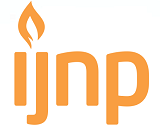Pedriatric Population in Disaster: How Should We Care for Them?
DOI:
https://doi.org/10.18196/ijnp.2283Keywords:
Pediatric, Disaster, CareAbstract
Abstract
Background: Disaster might cause many impacts for vulnerable people, especially children (pediatric population).
Objective: This paper aims to explain how should nurse do in caring for children in disaster management.
Method: This review is conducted by searching many literatures from Science direct, ProQuest, PubMed, and google scholar about children and care for pediatric population.
Result: Management for children in disaster should consider to many important things, such as: physical condition, psychology, development and behavior. Health practitioner include nurse should care for and involve families, consider to physical and psychological need and protect children from exploitation or any harms to prevent Post Traumatic Distress Syndrome (PTSD) in disaster management. Nurse should pay more attention for children as a unique vulnerable population by considering all aspects of pediatric and involve their families in disaster management.
References
American Academy of Pediatrics. (2015). Ensuring the health of children in disasters. Pediatrics, 136(5). doi: 10.1542/peds.2015-3112
Blake, N., & Bowers, E.K.F. (2018). Disaster preparedness: Meeting the needs of children. Journal of Pediatric Health Care, 32(2), 207-210. doi: 10.1016/j.pedhc.2017.12.003.
Bouten, M., & Becker, B.M. (2016). Children and disaster. Ciottene's Disaster Medication (Second Edition) (pp. 53-59).
Burke, R.V., Iverson, E., Goodhue, C.J., Neches, R., & Upperman, J.S. (2010). Disaster and mass casualty events in the pediatric population. Seminars in pediatric Surgery, 19, 265-270. doi: 10.1053/j.sempedsurg.2010.06.003
Cooper, L., Guan, H., Hernandez, A.A..O., Gallardo, B.L., Rivera, G., Wathen, G., Shulman, B., & Berman, S. . (2014). Pediatrics in disasters evaluation of a global training program. Advances In Pediatrics. doi: 10.1016/j.yapd.2014.03.003.
Cornette, E.C. & So, A.P. (2011). Children and disaster planning: The national commission on children and disaster's findings and recommendations. Journal of Emergency Management, 9(2). doi: 10.5055/jem.2011.0049.
Drayna, P.C., Hansen, A., Boggs, R., & Locklair, M.R. (2012). Disaster management and emergency preparedness for children and youth with special health care needs. Division of Pediatric Emergency Medication, 13(2).
Emergency Medical Service for Children. (2016). Addressing the needs of children in disaster preparedness exercises 2nd edition. Retrieved from www.stritch.luc.edu/emsc.
Kar, N. (2009). Psychological impact of disasters on children: Review of assessment and interventions. World Journal of Pediatrics, 5(1). doi: 10.1007/s12519-009-0001-x.
National Association of Pediatric Nurse. (2011). Pediatric nurse practitioners role in disasters involving children. Journal of Pediatric Health Care, 25(4), 9A-10A. doi: 10.1016/j.pedhc.2011.03.004.
New York City Health. (2008). Children in Disasters: Hospital guidelines for pediatric preparedness. The Centers of Bioterrorism Preparedness Planning Pediatric Task Force (3rd Ed.)
Nugroho, S.P. (2013). 2.586 Anak pengungsi Sinabung tetap bersekolah. Retrieved from https://www.bnpb.go.id/2-856-anak-pengungsi-sinabung-tetap-bersekolah.
Orlando, S., Danna, D., Giarratano, G., Prepas, R., & Johnson, C.B. (2010). Perinatal considerations in the hospital disaster management process. JOGNN, 39(4), 468-479. doi: 10.1111/j.1552-6909.2010.01158.x.
Pakpahan, Lisbeth. (2016). Kesiapan Manajemen Rumah Sakit Umum Kabanjahe dalam Penanganan Korban Bencana Erupsi Gunung Sinabung di Kabupaten Karo Provinsi Sumatera Utara Tahun 2013. Repository institusi Universitas Sumatera Utara. Retrived from http://repository.usu.ac.id/handle/123456789/61723.
Pusponegoro, A.D., & Sujudi, A. (2016). Kegawatdaruratan dan bencana: Solusi dan petunjuk teknis penanggulangan medik dan kesehatan. Jakarta Timur: PT. Rayana Komunikasindo.
Weiner, D.L. (2009). Lessons learned from disaster affecting children. 10(3).
Wizemann, T., Reeve, M., & Altevogt, B. (2014). Preparedness, Response, and Recovery Considerations for Children and Families: Workshop summary. United States: The National Academics Press.
World Health Organization and International Council of Nursing. (2009). ICN Framework of Disaster Nursing Competencies.
Downloads
Additional Files
Published
Issue
Section
License
License
Articles published in the IJNP (Indonesian Journal of Nursing Practices) are licensed under a Attribution 4.0 International (CC BY 4.0) license. You are free to:
- Share — copy and redistribute the material in any medium or format.
- Adapt — remix, transform, and build upon the material for any purpose, even commercially.
This license is acceptable for Free Cultural Works. The licensor cannot revoke these freedoms as long as you follow the license terms. Under the following terms:
Attribution — You must give appropriate credit, provide a link to the license, and indicate if changes were made. You may do so in any reasonable manner, but not in any way that suggests the licensor endorses you or your use.
- No additional restrictions — You may not apply legal terms or technological measures that legally restrict others from doing anything the license permits.
Copyright
Authors who publish with IJNP (Indonesian Journal of Nursing Practices) agree to the following terms:
- Authors retain copyright and grant IJNP (Indonesian Journal of Nursing Practices) the right of first publication with the work simultaneously licensed under an Attribution 4.0 International (CC BY 4.0) that allows others to remix, adapt and build upon the work with an acknowledgment of the work's authorship and of the initial publication in IJNP (Indonesian Journal of Nursing Practices).
- Authors are permitted to copy and redistribute the journal's published version of the work (e.g., post it to an institutional repository or publish it in a book), with an acknowledgment of its initial publication in IJNP (Indonesian Journal of Nursing Practices).














